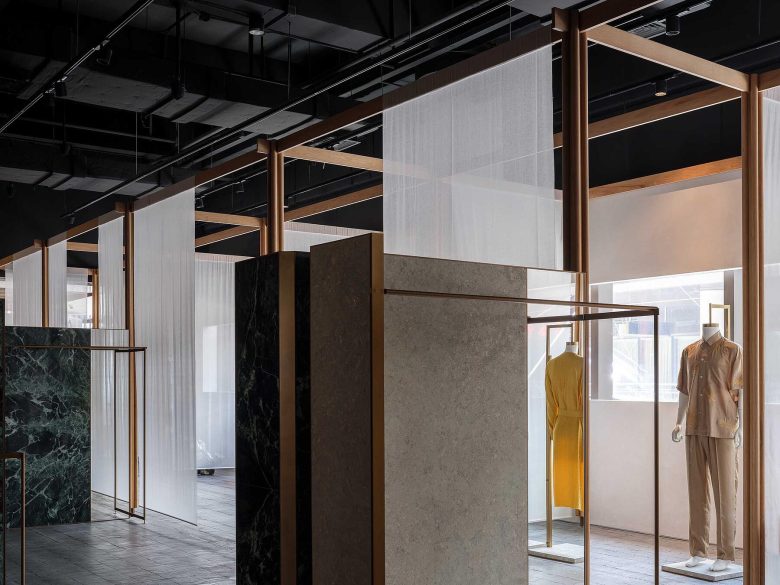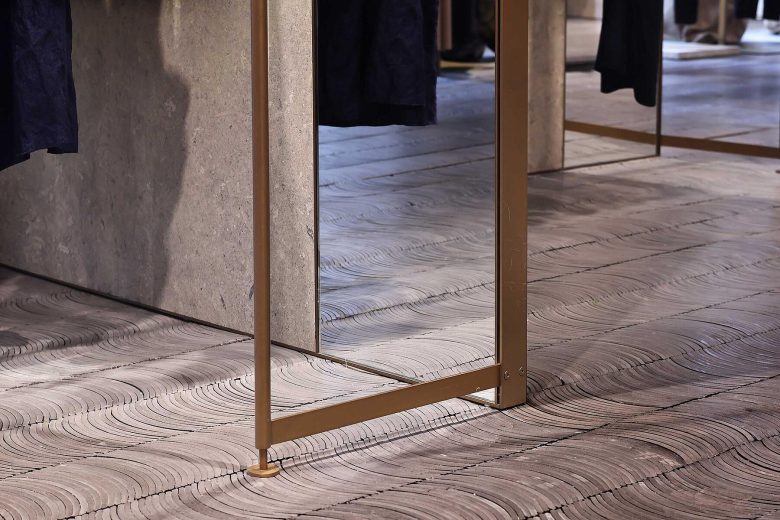

Textile literally means “that which has been woven,” derived from the Latin word “texere”, which means “to weave”. Before the Industrial Revolution, textiles were made by hand in villages across China by individual families; carding, spinning and weaving all took place in farmhouses, indeed a loom could be found in every well-conditioned homestead. While the textile industry has certainly evolved over centuries, the traditions and original spirit of textile-making are kept alive. Launched in 2010 by Liu Min and Ian Hylton, Ms MIN is a young fashion brand that places emphasis on fabric and fit. For their shop in Taikoo Li, one of Shanghai’s most popular retail destinations, Neri&Hu harkens back to the notion of a traditional fabric atelier, showcasing craftsmanship, rich materiality, and a domestic sensibility.
Entering into the shop, the space is divided into several zones. To the right, the House is expressed as a wooden structure with overhanging eaves, and serves as a reception up front and studio area inside. Along the windows to the left, the same wooden structures form an open grid with cloths hanging in between as lightweight partitions. Natural daylight and the chaos of the shopping mall are filtered by the sheer fabric screens, giving the space an overall sense of calmness. Between the House and the wooden cloth racks lies an internal courtyard paved in a traditional way, using curved roof tiles stacked and inlaid. A series of panels are arranged in the courtyard, forming interconnected yet distinct exhibition spaces which can be re-arranged and interchanged to suit various motifs for every season, as fashion is always fast-paced and evolving. Neri&Hu’s custom mannequin figures for Ms MIN are made with linen, a material that gives a skin-like subtle texture.























